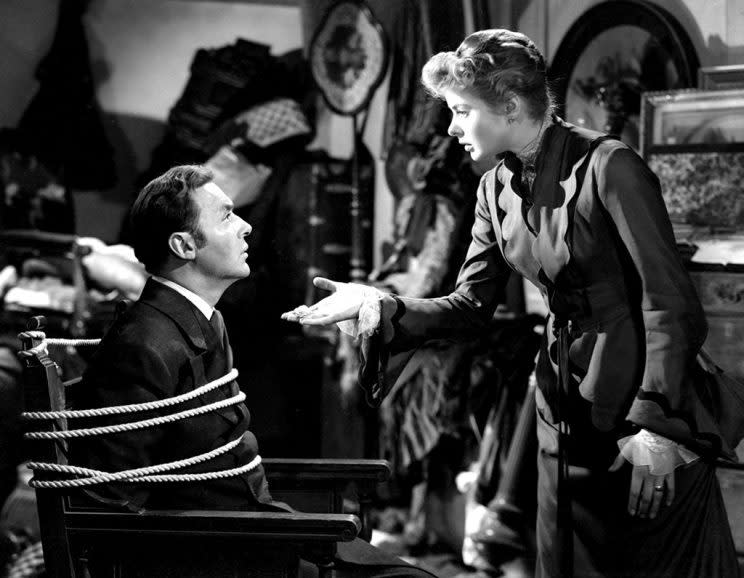The Term 'Gaslighting' Was Coined From a Great Movie Starring Ingrid Bergman

If you’re following the commentary surrounding the presidential election, you may have noticed the word gaslighting popping up with increasing frequency. To gaslight means, per the Oxford English Dictionary, to “manipulate (someone) by psychological means into doubting their own sanity.” It’s normally used to describe emotional abuse in a relationship, e.g., a cheating husband who tells his wife she’s crazy, misremembering, or “imagining things” when she points out signs of his infidelity. But thanks to recent campaign tactics, it’s becoming a political term. For example, after Tuesday night’s vice presidential debate, Slate ran an editorial titled “This Wasn’t a Debate. This Was a National Gaslighting,” which cites multiple examples of Mike Pence denying that Donald Trump said things that he actually, provably said. (A few other recent examples of “gaslighting” headlines can be found here, here, and here.) What does that have to do with gaslights, you might ask? The connection actually comes from a popular 1944 suspense film called Gaslight, in which a man (Charles Boyer) conspires to convince his wife (Ingrid Bergman) that she’s going mad.
Watch a trailer for Gaslight:
Directed by George Cukor, the film is an adaptation of a play and was preceded by a British film adaptation in 1940. But the Hollywood version is the best known, featuring an all-star cast and the screen debut of a 19-year-old Angela Lansbury, who steals her scenes as a disdainful housemaid. Bergman plays Paula, an opera singer whose husband, Gregory (Boyer), persuades her to move into the house bequeathed to her by her aunt, who was murdered when Paula was a child. In the attic, Paula discovers evidence that might point to her aunt’s killer. She also hears footsteps at night and sees the gaslights in the house flicker mysteriously. Gregory tells her that all these things are a product of her fevered imagination — and when valuables start going missing, Gregory “discovers” that Paula has stolen them. Before long, Paula starts to believe that she is actually hallucinating and can’t trust own mind, when, in fact, Gregory is systematically attempting to brainwash her.
As a psychological term, gaslighting seems to have picked up in popularity in the 1980s and is now described as an “extremely effective form of emotional abuse that causes a victim to question their own feelings, instincts, and sanity” on the website of the National Domestic Violence Hotline. As a plot device, it shows up frequently in films; the new thriller The Girl on the Train, last year’s sleeper hit The Gift, and 2007’s The Darjeeling Limited all have characters who experience gaslighting. The 1944 film holds up, though, and will strike a nerve in anyone who has experienced or witnessed this all-too-common form of manipulation — which, in this election year, might be all of us.
Gaslight is available to stream on YouTube, iTunes, Amazon Video, Vudu, and Google Play.


